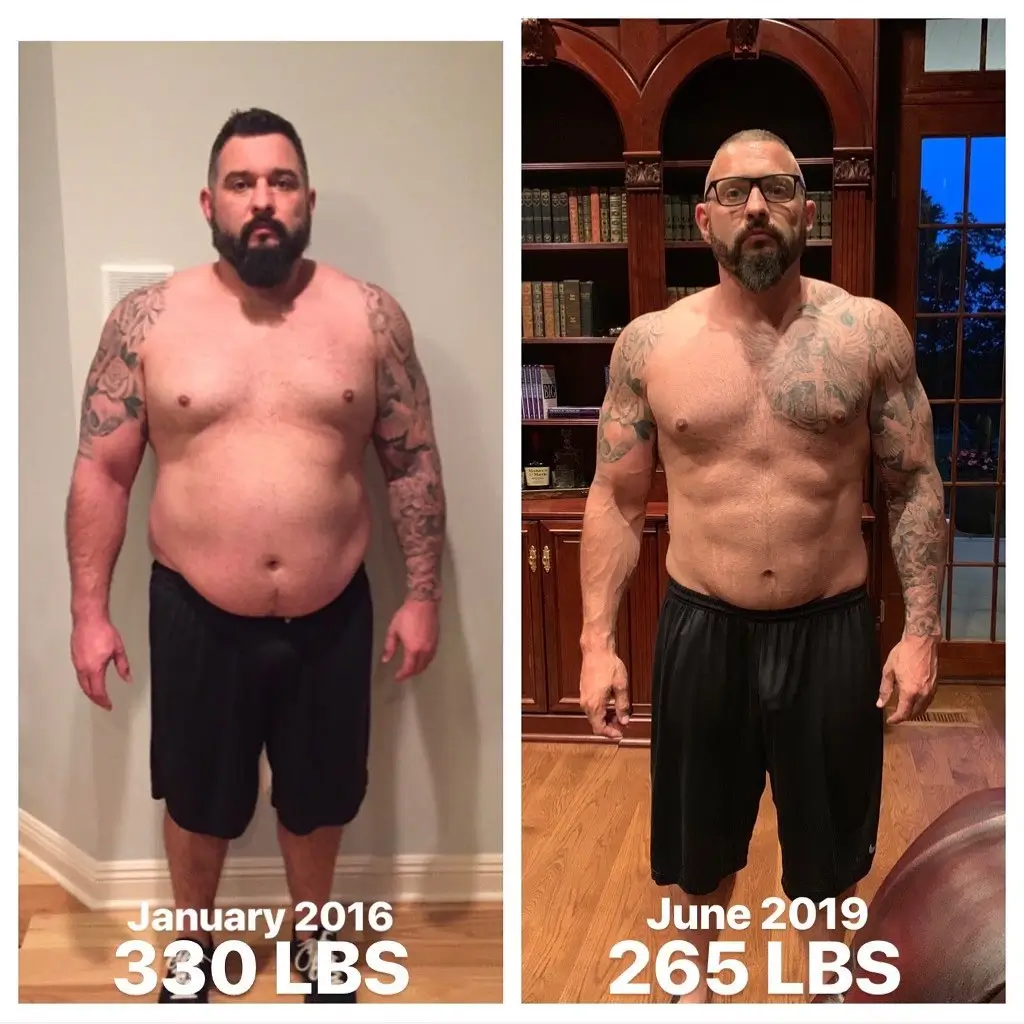In 2019, a fitness regimen called the 75 Hard Challenge debuted. He encouraged followers to make changes in diet, fitness and mental health.
With before and after photos disrupting Instagram and TikTok, people were raving about it. But what about 75 Hard, and is it right for you? Here’s what you need to know.
75 Hard is a program created by Andy Frisella, entrepreneur, podcaster and CEO of the 1st Phormof the Real supplement company. While Frisella is a nutrition, fitness and weight loss enthusiast, he has no professional nutrition or exercise science background.
However, on Frisela’s website, he clarified that 75 Hard is not a fitness program but a “mental toughness transformation program.” Frisella explained that he decided to create his program after seeing many people start and fail at fitness programs. So he wrote his own.
There are six main rules of the program and you must do them daily; they are non-negotiable:
- Choose a diet and stick to it.
- Follow the diet plan strictly. No alcohol.
- Drink a gallon of water every day.
- Take a daily progress photo.
- Do two 45-minute workouts a day, one of which must be outside, regardless of the weather.
- Read 10 pages a day of a self-improvement book.
Here’s a big caveat: If you skip a step, you have to start over from day one.

Frisella didn’t just come up with 75 Hard; he also claimed success with it. He shared before-and-after pictures on Instagram in June 2019, writing that he was “grateful” for the “perspective” his program helped him gain. He also said he got “a big part of my life back” after going through the program. (Health (reached out to Friselli but had not heard back by the time of publication.)
Many people have created testimonials about the program on social media, saying that they got in shape and improved their physical and mental health thanks to 75 Hard.
As for the individual elements of the program, research can influence these three main points: Choose a diet plan and stick to it; drink a gallon of water a day; do two 45-minute workouts a day.
Frisella recommended choosing a diet plan and sticking to it. However, while diet plans may initially lead to weight loss, the results don’t always last.
A 2020 study published in British Medical Journal asked participants to report their results after following a popular diet such as paleo, keto or Mediterranean or an alternative control diet such as macro counting. The researchers found that most participants experienced weight loss, but these desired effects disappeared after a year.
Another of the 75 hard requirements is to consume a gallon of water every day. According to the American National Academies of Sciences, Engineering, and Medicine, a gallon of water a day just exceeds the adequate daily fluid intake, which is about 15.5 cups (3.7 liters) of fluid per day for men and about 11.5 cups (2.7 liters) of fluid for women. daily. of fluids per day for women (one gallon equals 16 cups).
Of course, during exercise you need to replace the water lost through sweating. According to the American Council on Exercise (ACE), hydration is a key part of any exercise regimen. Water regulates body temperature, lubricates joints and helps transport nutrients for energy. If you are dehydrated, you may feel tired and have muscle cramps, dizziness or other serious symptoms.
In terms of quantity, ACE recommends the following:
- Drink 17 to 20 ounces of water two to three hours before you start exercising.
- Drink seven to 10 ounces of water every 10 to 20 minutes during exercise.
- Drink eight ounces of water no more than 30 minutes after exercise
The 75 Hard Challenge recommends exercising twice a day for 45 minutes each time, which means you are exercising 90 minutes a day.
A 2020 study found that exercise can help us lose weight, in part by remodeling appetite hormones. But to benefit, we most likely need to burn at least 3,000 calories per week. In the study, that meant working six days a week for up to an hour, or about 300 minutes a week.
Reactions from fitness and nutrition experts Health they were talking mixed up. “It’s really simple and straightforward,” Albert Matheny, RD, CSCSco-founder of SoHo Strength Lab, Promik Nutrition and ARENA, said Health. “People tend to be more compliant when there are only a few rules.”
But Kerry Gans, RDthe author Diet for small changes, said Health that the program “seems extremely difficult to execute. You have to ask yourself, ‘Do I really want a program that labels itself as “difficult?” Because a healthy lifestyle shouldn’t be difficult.”
Doug Sklar, Certified Personal Trainer and Founder PhilanthroFIT in New York, is also wary of the program. “While mental strength challenges can certainly be beneficial, that’s an important distinction here because, as far as fitness and nutrition, there are virtually no guidelines in a program that calls for two workouts a day,” Sklar said. “Improper exercise—poor form, inadequate intensity, not counting rest days—over a long period of time can be harmful.”
In fact, a study published in Journal of sports medicine and physical training found a 144 percent increase in all training-related injuries from 2012 to 2016 compared to 2007 to 2011.
Although two days of training seems like a lot, Matheny says there’s “nothing wrong” with working out that much. However, Matheny recommended being aware of your own fitness level before diving in, and adjusting your training accordingly. “If you haven’t worked out before, don’t do two HIIT classes a day,” Matheny said. “Even walking 45 minutes twice a day is great.”
Sklar pointed out that these types of programs are “intended for beginners,” and 90 minutes of exercise can be a lot for those who don’t exercise much or at all. “Although presented as a mental toughness program, the accompanying images are mostly testimonial-style ‘transformation’ photos,” Sklar said. “As a result, this is presented as a fitness program. While there are benefits to mental strength training, there are safer and more effective ways to create a sustainable lifestyle change.”
Experts generally agreed that an alcohol-free lifestyle and a fixed diet plan are good for most people. But Matheny said his “favorite” part of the program is the requirement that followers exercise outside at least once a day. “People, in general, are really soft in different areas of life – physically and mentally,” Matheny said. “This is causing it.”
Overall, experts said whether a program like this works for everyone depends on several factors, including personality type and your fitness level. “This program may work for some, but they might be exceptionally Type A or like to have a ‘sergeant’ living with them,” Gans said. “But there’s no denying that if you stick to a diet, eliminate cheat meals, and if you give up alcohol, you’ll probably lose weight. But, Gans added, “I’m curious as to what’s going on.” after 75 days.
According to experts, that Health that we spoke with, there are things to love and leave behind about the 75 Hard Challenge.
Advantages:
- It’s simple
- It focuses on being alcohol free
- This includes exercising outside
Cons:
- A healthy lifestyle should be sustainable
- Without instructions, injuries may occur
- 90 minutes of exercise a day can be a lot for a beginner
- Results depend on personality and fitness level
Finally, like all fitness regimes, one size does not fit all. The best fitness plan for you will depend on your goals, current fitness level and lifestyle.


